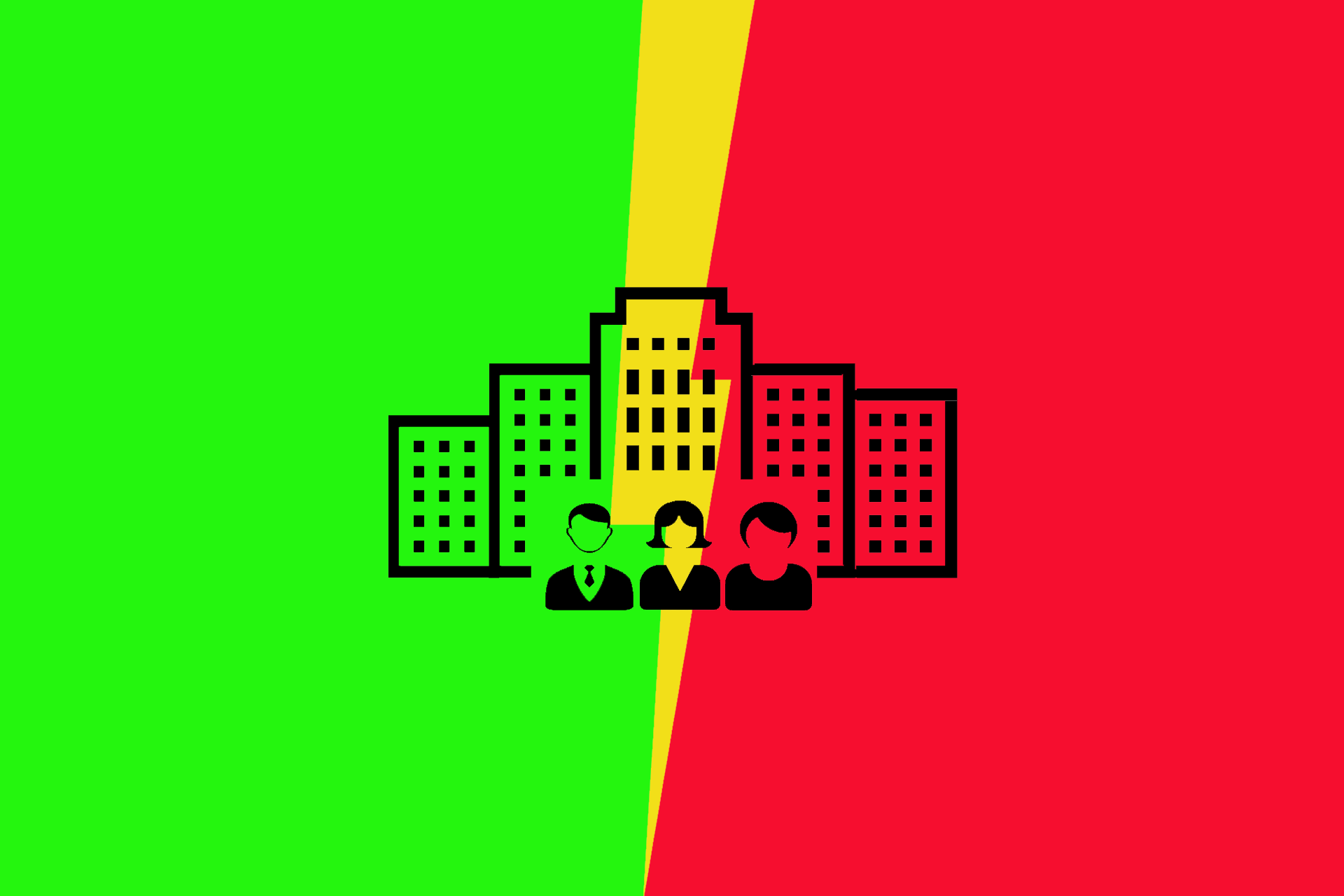New Work or Zombie Apocalypse
We need empathic leaders. Companies that put us people at the center of their business. Sense-driven organisations.
Ever since we switched to agile, the employees have been dancing on my nose. It’s a rappel permit. And to top it all off, my target agreement states that I am responsible for ensuring that the screw-ups are satisfied.
We’ve had enough of this New Work talk. This is just old wine in new skins. Scrum and home office are just more paving stones in the obviously endless road to more productivity.
Welcome to the zombie apocalypse. A business world where well-intentioned is anything but well done. What companies need is a concept for (survival) on the donut.
Made a wrong turn and got stuck in the mud
Is your company in the middle of something? Transformation is happening everywhere these days. You push forward the (necessary?) digitalisation. You value your employees. You increase output. You strengthen the sense of well-being at work. You finally make our economy human. You earn your money on the platform. You work in the cloud. That works in the office, at home and in co-working. In short, you make everything better.
But beware, there is an increasing number of reports that this is just fake. More and more often you read about companies that are rowing back. Or have never done it seriously. Instead, they value discipline. Clear messages give back security to their employees and their superiors. A clean separation between office and home creates trust. Detailed recorded working hours protect against self-exploitation. The whole New-Work-Agile-Remote-Wave exposes itself as a marketing show. Just like Spotify. Behind the company doors, the regiment of the traditional functional hierarchy of instructions continues to lead to success.¹
You can make the right turn
But wait, this is also a false report. There are those companies which, like the small Gallic village in Asterix, are escaping the widespread depression caused by dependent wage labour. Workforces that exist in the market with or even because of changed social patterns in the organisation. As many different directions they take, one thing unites the successful ones: Every employee in the company can consistently influence the company from within. In their cooperation they are self-effective.
How do I know that? From first hand. For more than ten years I have been able to support companies on their way there. For example, they are called Heiler, NETSYNO or Teledata. hey make interior glass, software and services for tax offices. Their business models would be wonderful with Cradle to Cradle in a circular economy without growth. They survive on the donut. But what does that mean?
In the circle instead of the zombie apocalypse
This doughnut image is proposed by the English economist Kate Raworth as an alternative to the higher-faster-further of unconditional capitalism. In the hole of the dessert there are precarious living conditions that we do not wish for anyone. Which should be abolished. The external frontier is the overexploitation of the planet’s resources. Between these two circles, on the doughnut, is the place for sensible economic activity.²
The diagram of the curl helped me to understand what goes wrong with many transformations. Nobody wants to run the business in such a way that it functions in a completely changed economic system – the doughnut economy. The rule is still bigger, faster, further. Only now in a human-centered masquerade. What comes out of this is something that readers know from historical novels. There we learn that nobles did not wash themselves at all. It was considered vulgar. They put on more powder and perfume. What was supposed to smell good on the outside was musty on the inside. Recently, a genre of film is gaining more and more followers, that carries this rot into our time: Zombie movies. Those who use New-Work-Agile-Remote concepts and methods to maintain the existing economy create the zombie apocalypse of work.
To jump off the death sentence of decadence and inertia
This is what flourishes for the majority of transforming companies. Depressed, burnt-out executives serve an increasingly rebellious, spoiled workforce. This workforce complacently dithers away their company’s profits at hedonistic after-work parties. In turn, they even pay for the thirty-five cubic metres of sandy beach on the flat roof that are needed to create that South Sea feeling. At first the boring accountant notices. Something goes wrong. By the time the owners want to see it, the place is full of undead idlers: inside, it’s often close to insolvency, which has to be celebrated with a lot of merriment.
Attention! Rowing back is not an option, because the problems of the growth and power economy are unfortunately real. Companies face an increasingly changeable world. This applies to the economy (Tesla successfully builds cars) as well as natural phenomena (Corona) or political structures (Donald Trump). But we can all breathe a sigh of relief. There is a patent remedy for the solution. You can help this dynamic by having more people thinking in terms of the company. Unfortunately, that doesn’t work well enough if you just play New Work instead of doing it consistently. But that requires courage and a way of thinking, as is customary on Mrs Raworth’s doughnut.
Help is coming!
Many of my colleagues in the bubble are pulling the sails at this point. Yes, they name precisely all difficulties. Yet their ideas reach just far enough to optimise the existing system. A way out seems unknown to them. Well, I’m going to take cover. Surely there are various ways out of our self-destructive economic ruin in the future without ending up in a zombie apocalypse. Mark Lambertz offers one for large organisations. He brings Stafford Beer’s Viable System Model³ into our time. I know of an alternative for small and medium-sized companies that has been proven to work. We call it operational catalysis. It’s evolving from my work over the last twenty years. It comes from practical experience, with colleagues and above all customers. We have turned to the upcoming problems of the companies and solved them differently. How?
- Through intelligent collaboration. It picks up the resistances and uses them for a high quality in changes.
- By creating a space for participation that is free of compulsion and fear. In this way, every person who wants to come into their own effectiveness for the company can do so.
- With an exit from dogmas that are all too often associated with Agile, Beta or Holacracy. We achieve it because we enter into the work with thinking tools that enable us to solve all upcoming tasks with the doughnut glasses.
- On the basis of a comprehensive clarity regarding the impact of the joint efforts.
There is no one-size-fits-all
Of course, there is no such thing as one-size-fits-all. And yet many companies face the same challenges. It’s up to us whether we respond with more dependency and increasing precarity or take the risk of a dedicated collaboration that can solve exactly your problems permanently. I see it differently than many of my colleagues. This is no longer a matter of uncertainty. Several pioneers have shown what we can rely on: No matter how bad things get, as soon as we choose a hero to save us, it is the first sure step towards even greater disaster.
It’s time for the truth. The story of Ata (in German). On this island south of Tonga, six young people prove that we are not self-centered beasts, as the world bestseller “The Lord of the Flies” suggests. They survive fifteen months on a rock in the Pacific Ocean. Without a boss (elected or appointed), without authority, without violence. In his book “Im Grunde Gut”, Rutger Bregman clears up this and many other heroic tales. Leaders prevent us from being successful as a community. These are just the stories they tell us to maintain their position.
The Operating Catalysis will lead you and your company out of this zombie apocalypse of hidden violence and mutual cheating. It opens up a new playground. One in which we fulfill ourselves as human beings together. And yes, the grass is actually greener here. Wouldn’t it be good to work on this side? 😉
Notes:
[1] Spotify doesn’t use “the Spotify model” and neither should you”.
[2] Here you can find information about Doughnut Economics by Kate Raworth.
[3] Mark Lambertz has published an article about the Viable System Model and responsible leadership here in his blog post.
Gebhard Borck has published more posts in the t2informatik Blog:

Gebhard Borck
Gebhard Borck set out two decades ago to find a fair business management. On his way he discovered that it was probably still to be developed. Since then he has dedicated his work to this task. Together with changing customers and daring colleagues, the company catalysis developed from this. A practicable alternative to the existing business administration. The most exciting thing is: with it your company will run in many contexts, be it in lived capitalism, in de-growth or in a circular economy, like on the donut. One thing is the same in all variations: the focus on existential balance as the central measure of success. In his current book “Die selbstwirksame Organisation” (The Self-Effective organisation), the transformation catalyst describes how you can successfully play the operating catalysis in your company.

